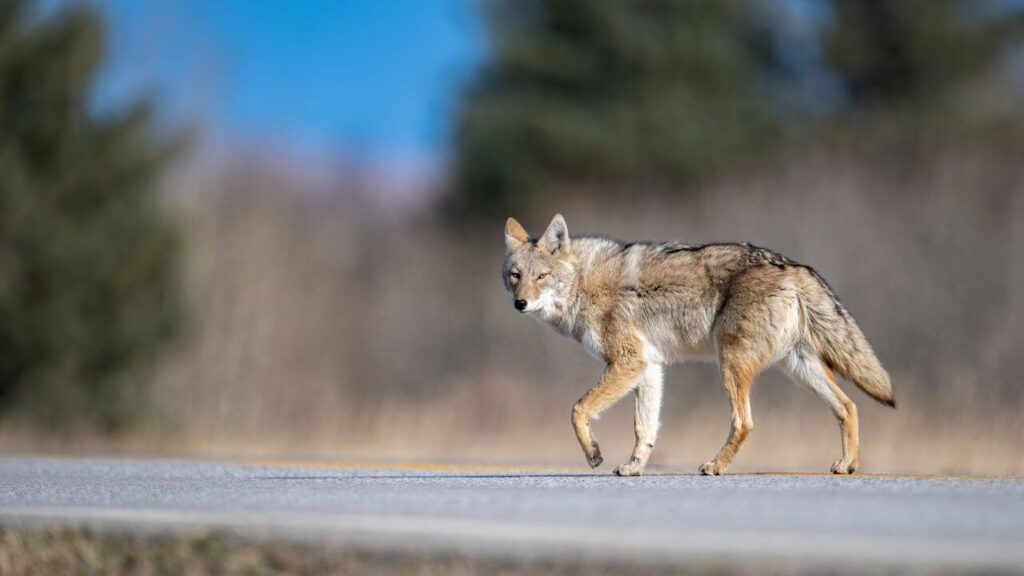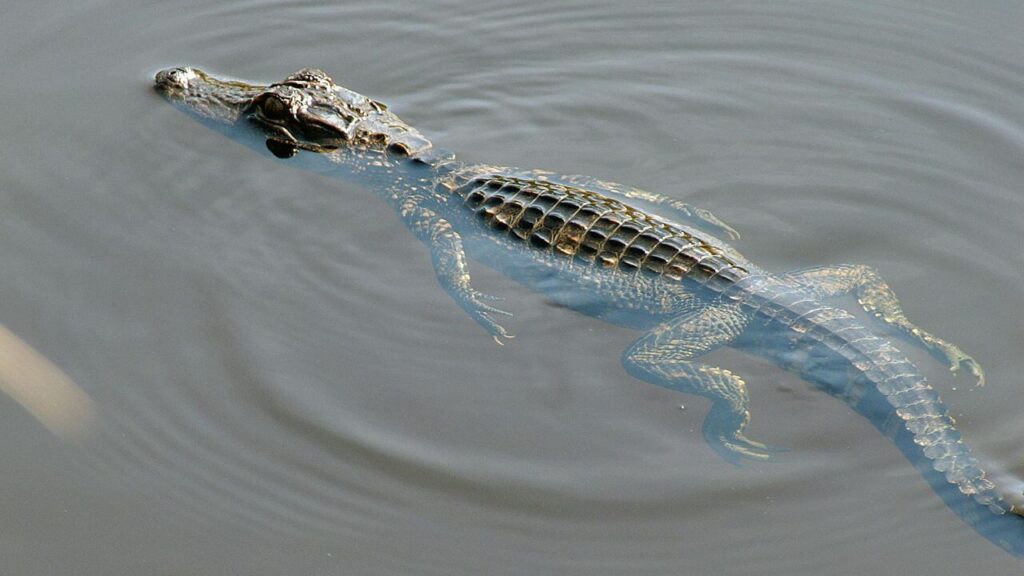As a wildlife enthusiast, I’m pleased to present a comprehensive list of potentially dangerous wildlife species that one might encounter while walking with their dog in Nokomis, Florida. Given its location on the Gulf Coast and its subtropical climate, Nokomis is home to a diverse range of wildlife, some of which can pose risks to dogs and their humans.
Below is detailed information about each species, including their physical characteristics, habitat, behavior, and significance in the ecosystem. Additionally, I’ve included some tips on how to observe these animals safely without disturbing their natural habitat.

- Coyote (Canis latrans): Coyotes are medium-sized carnivores with a slender body, pointed ears, and a bushy tail. They inhabit a variety of environments, including forests, grasslands, and urban areas. While not typically aggressive towards humans, coyotes may view small dogs as prey or larger dogs as a threat, especially during mating and pup-rearing seasons.
Safety Tip: Keep your dog on a leash and maintain a safe distance from any coyotes you may encounter. If a coyote approaches, make loud noises and wave your arms to scare it away.

- American Alligator (Alligator mississippiensis): The American Alligator is a large reptile with a broad snout, sharp teeth, and dark, scaly skin. They inhabit freshwater environments such as swamps, marshes, and rivers. Alligators can be dangerous to dogs and humans if they feel threatened or when guarding their nests.
Safety Tip: Maintain a safe distance of at least 60 feet when observing alligators, and never attempt to feed or approach them. Keep your dog on a leash near bodies of water where alligators may be present.
- Venomous Snakes: Nokomis, Florida is home to several venomous snake species, including the Eastern Diamondback Rattlesnake (Crotalus adamanteus) and the Cottonmouth (Agkistrodon piscivorus). These snakes can pose a threat to dogs if they feel threatened or are accidentally stepped on.
Safety Tip: Keep your dog on a leash and stay on well-trodden paths. Learn to identify venomous snake species in your area and educate yourself on appropriate first aid measures in case of a snakebite.
- Fire Ants (Solenopsis invicta): Fire ants are small, reddish-brown insects that build large mounds in open areas. Their stings can be painful and potentially dangerous to dogs, especially if they suffer from multiple stings or have an allergic reaction.
Safety Tip: Keep your dog on a leash and avoid disturbing ant mounds. If your dog is stung, consult your veterinarian for appropriate treatment options.
- Ticks: Ticks are small, blood-sucking arachnids that can transmit diseases such as Lyme disease and ehrlichiosis to dogs and humans. They are commonly found in wooded areas, tall grass, and brush.
Safety Tip: Use tick prevention products on your dog and check both yourself and your pet for ticks after each walk. Remove any ticks promptly and safely.
- Snapping Turtle (Chelydra serpentina): The Common Snapping Turtle is a large freshwater turtle with a dark, heavily-armored shell and strong jaws. They inhabit ponds, lakes, and slow-moving rivers. Snapping turtles can pose a danger to curious dogs that approach them too closely.
Safety Tip: Keep your dog on a leash near bodies of water where snapping turtles may be present, and teach them the “leave it” command to prevent them from approaching potentially dangerous animals.
When walking with your dog in Nokomis, Florida, it’s essential to be aware of potentially dangerous wildlife species and take necessary precautions to ensure the safety of both you and your pet. By following these safety tips, you can enjoy the great outdoors while minimizing risks to your canine companion.

